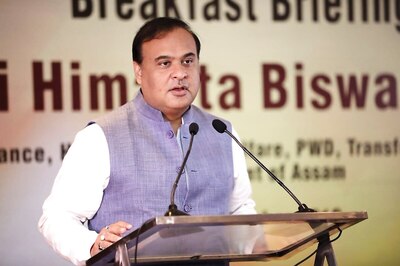
views
After last week’s surprise ceasefire announcement by India and Pakistan, the two neighbours are seriously considering restoring their respective High Commissioners in the missions in New Delhi and Islamabad, highly placed sources have told CNN-News18. India and Pakistan had recalled their High Commissioners after the Pulwama terror attack in February 2019, and both missions have remained headless since then.
The last time both countries recalled their High Commissioners was at the height of Operation Parakram in 2002. It eventually led to the ceasefire agreement of 2003 between General Musharraf and Prime Minister Atal Bihari Vajpayee. It also saw PM Vajpayee travel to Islamabad for the SAARC summit in January 2004.
A similar story could well be in the works this time around, even though sources have said the possibility of PM Modi travelling to Islamabad for a SAARC summit later this year are ‘distant and remote’. But it’s not just politics that goes around in circles. Sometimes, so does diplomacy.
BACK-CHANNEL DIPLOMACY
So what has brought about this détente? The Indian Express reported over the weekend that back-channel negotiations had happened between NSA Ajit Doval and the Pakistani civilian and military leadership over the last three months, including a possible meeting in a third country, possibly in the Gulf. Neither side has denied the story.
The ceasefire announcement was preceded by a series of favourable statements coming from both the Pakistani civilian and military leadership. On February 2, Pakistan Army Chief General Bajwa had made a strong pitch for Indo-Pak peace. It was followed days later by the Pakistan PM’s special advisor on national security Moeed Yusuf talking about the need to move forward. It was capped last week by Prime Minister Imran Khan’s statement while on a bilateral tour to Sri Lanka.
It’s clear that the ceasefire announcement is just the first of many steps in what is seen as a rapprochement process. It’s also clear that such a high-profile announcement had to have the “imprimatur” of Prime Minister Modi and Prime Minister Khan, as The Hindu reported a few days ago.
Both sides are proceeding extremely cautiously as such attempts have failed too many times in the past. Yet, there is a realisation in both capitals of the zero-sum nature of high ceasefire violations, which had more than tripled between 2018 and 2021.
EYE ON BEIJING, TANGO WITH ISLAMABAD
For India, the ceasefire announcement caps two good weeks of diplomacy. It came right after the disengagement announcement with China. Right after the ceasefire announcement on Thursday, Foreign Minister Jaishankar had over an hour-long telephone call with his Chinese counterpart, Wang Yi. They also agreed to establish a hotline between their offices. Yet, highly placed sources have denied any kind of ‘package deal’ between Beijing and Islamabad.
One thing that became abundantly clear through 2020 is that India can ill-afford a two-front war. Ironically, that is the very thing the Indian Army has been preparing for since at least the mid-nineties. The Army’s capabilities were stretched thin under the double whammy of Chinese incursions along the LAC in eastern Ladakh, and exponential ceasefire violoations along the LOC in Kashmir.
Even politically, it made little sense for the Modi government to enter into a two-front war with an economy that was bleeding because of the pandemic and a political leadership that was keen on putting India back on a high growth trajectory. Something had to give. Enter America.
B FOR BIDEN, P FOR PEACE
The new US administration under President Joe Biden is no fan of wars in far-off places. Their number one priority in South Asia is to reduce American troops in Afghanistan and secure some form of political understanding between the Afghan government and the Taliban. Pakistan quickly realized it is much better off engaging with the Americans on this front without having to look over its Eastern flank.
Both India and Pakistan have vehemently denied any American pressure in bringing about this détente, but it’s clear that neither side wants to start off on the wrong foot with the new administration in White House. For India, anything the Biden folks say on Kashmir, human rights etc. is anathema, while for Pakistan, it’s squarely focused on the war in Balochistan and the volatility along the Pak-Afghan border. The timing of the India-China disengagement announcement coming just hours before the Biden-Xi phone call is also not lost on strategic observers in South Asia.
WHITHER SAUDI, BLOOM UAE
As an end note, one of the first countries to welcome the India-Pakistan ceasefire announcement was the UAE. Saudi Arabia has so far been quiet. It’s clear that the Biden administration is pressing its foot against Saudi Crown Prince Mohammed bin Salman’s neck in the Jamal Khashoggi murder, although it has decided not to directly sanction him.
Biden will want to revive the Iranian nuclear deal that got lost under the previous Trump administration. As a consequence, Saudi Arabia’s strategic importance to Washington will also fall considerably. But for India, Saudi is still the number 1 oil supplier. Plus, the maximum number of expat Indians work in Saudi Arabia. With petrol already at Rs 100 per litre, New Delhi can ill afford any kind of supply squeeze by OPEC led by Saudi Arabia. The next few months will be a tightrope walk.
Read all the Latest News, Breaking News and Afghanistan News here




















Comments
0 comment